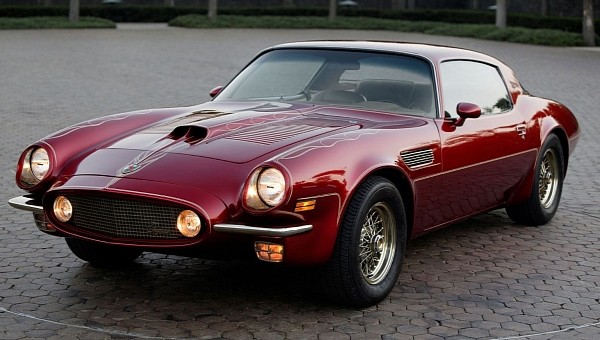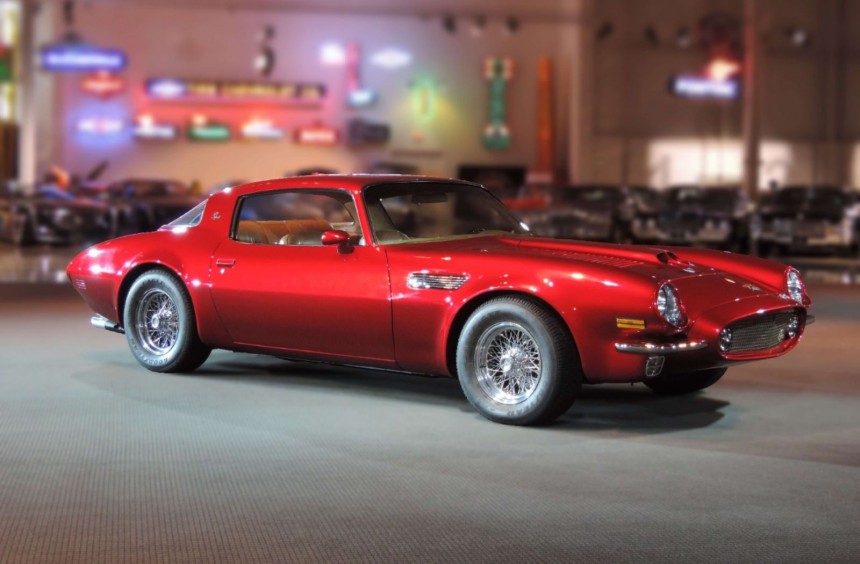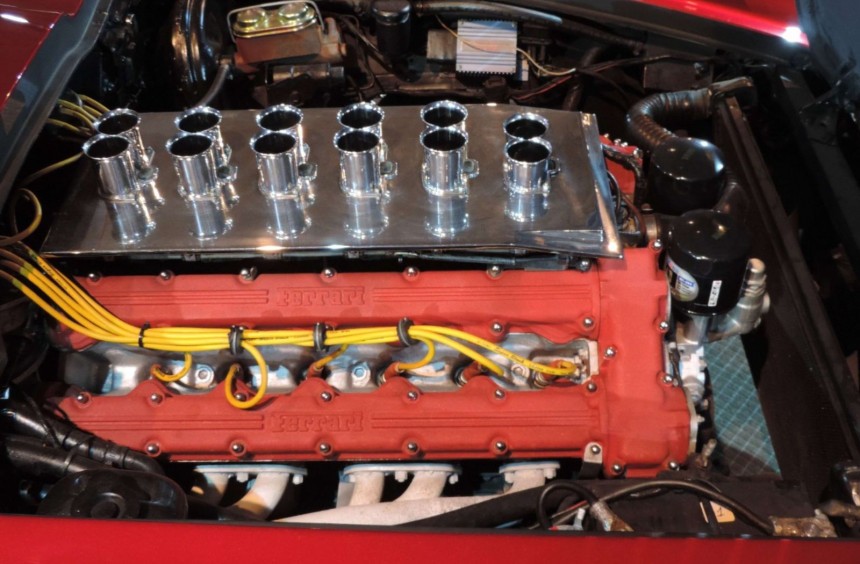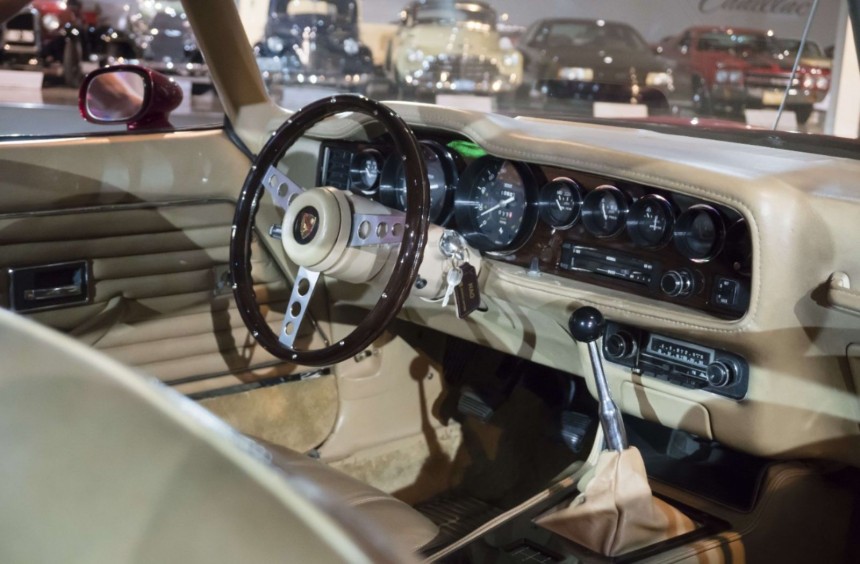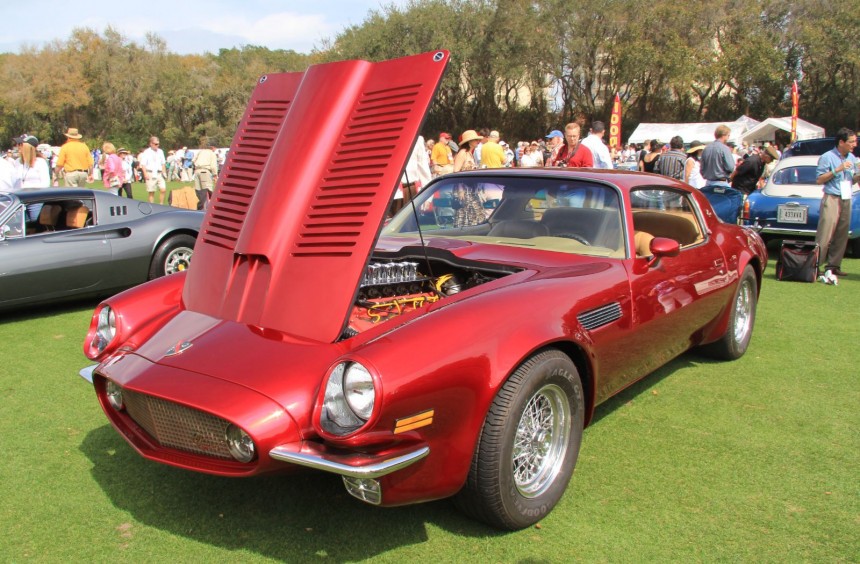In the world of vehicle customization, an American car with a Ferrari engine swap is nothing new. That being said, the Firebird Pegasus was no ordinary custom car, but an official Pontiac concept developed with the blessing of the Italian carmaker.
It’s been almost twelve and a half years since General Motors was forced to discontinue the Pontiac brand. Sadly, the name doesn’t mean much these days for the younger generations who mockingly associate it with Walter White’s atrocious Aztek.
But, for older folks and car fanatics of all ages, Pontiac lives on as one of the brands that thrived during the original muscle car era. Four-wheeled legends like the GTO or the various V8-powered Firebird versions remain some of the most exciting rides built on U.S. soil throughout the 1960s and 1970s.
Throughout the years, these cars have been covered in thousands of articles and, if the Aztek is the first thing that comes to mind when you hear Pontiac, I suggest you do some reading.
Regular GTOs, Firebirds, or Azteks aside, let’s take a look back at probably the most incredible concept car ever built by the now-defunct brand, the 1-of-1 Firebird Pegasus concept.
Though the exact date when this insane endeavor actually started is still a mystery, multiple sources state that 1970 was the year when Chevrolet designer Jerry Palmer drew the first sketches of this wild concept.
The initial idea was to come up with visual improvements for the newly-introduced, second-generation Camaro, so Palmer decided to add several cues (most notably the front end) from a 1958 Ferrari 250 Testa Rossa to the existing design.
As weird as the combination might have sounded, the sketches looked awesome, catching the eye of styling chief Bill Mitchell, the man remembered for greenlighting some of the corporation’s most iconic designs.
Mitchell thought that the sketch should be transformed into a real car but, rather than giving the project to the Chevy team, he took it to Pontiac and tasked the engineers with transforming a production version of the Camaro’s platform-sharing sibling into a fully functional concept.
The Pontiac engineers went to work on what was called the Pegasus project, but the designers opted to modify several aspects of Palmer’s original work. The bulging, Ferrari-inspired fenders as well as the swopping rear end with its wraparound glass, that would make it into production in 1975, were retained. Yet the front fascia received cues from the standard model like the grille divider and squarish headlights.
Apart from the visual refinements, Mitchell told the engineers to swap out the Firebird’s stock motor with something that would match its new Ferrari-inspired looks. Rather than spend time and money on developing a new engine or beefing up an existing unit, he gave them a genuine Ferrari V12 to work with.
Legend has it that Mitchell spoke about the project with Enzo himself and surprisingly, the Ferrari boss gave his blessing. While it’s unclear if the GM Vice President of Design had to kiss his ring or do anything of that nature, he did receive a brand-new engine straight from Maranello.
The unit in question was a 365 Colombo with dual overhead cams and a dry sump lubrication system. With an output of 352 hp, the 4.4-liter was originally used in the 365 GTC/4 “Daytona” grand tourer. Mitchell wanted a Turbo-Hydramatic transmission, and the engineers tried their best to make it happen, but the powerplant proved too much for the three-speed auto, so the car ultimately received a five-speed manual.
With four more cylinders than what American cars were usually accustomed to in the 1970s, the V12 didn’t exactly fit like a glove inside the Firebird’s engine bay, requiring several modifications. Lengthening the chassis was considered, but, in the end, engineers took a less drastic approach, moving the firewall nine inches back and modifying the engine’s exhaust headers.
With the exterior enhancements and the Ferrari V12 sitting snuggly under the Firebird’s hood, the Pegasus team could have called it a day, and no one would have complained. However, they didn’t stop there and put a decent amount of work into refining the unique car even more.
The first example of this desire to achieve perfection is the interior, where the dash was modified to house Veglia Borletti gauges borrowed from the Daytona. Everything else was relatively stock inside, but the abundance of fine, light-colored leather made the car feel more Italian.
Like many iconic European exotics of the era, the Pegasus Firebird sat on a set of Borrani wheels hand-build in Italy, which were wrapped in chunky Goodyear Eagles made in the U.S.
Completed in 1971, it was painted with an eye-catching shade of red and decorated with what seemed like miles worth of gold pinstripes.
The GM VP was so impressed with the result of what had become his latest pet project, that he decided to keep it. Mitchell didn’t exactly drive it daily, but he used to often take the Ferrari-powered Firebird to car shows and racing events. He didn’t race it either, but rather took it around the track for a few demonstration laps, then parked it in the pit area with its hood up, leaving everyone speechless.
After one such event held at Road America in Wisconsin during a weekend plagued by heavy rain, Mitchell ended up crashing the one-off into a bridge abutment. After this incident, the car’s front fascia was rebuilt following Jerry Palmer’s original design.
Mitchell retired in 1977. But he kept the Pegasus all to himself, continuing to drive it regularly. Several years later, its front end was subtly redesigned one more time, followed by a full restoration.
The legendary designer passed away in 1988, and the astonishing concept car was returned to GM. It underwent another complete restoration in 2012 and, while no further modifications were made, it was repainted without the original pinstripes.
Those that want to see Pontiac’s most outrageous concept can visit GM’s Heritage Center in Sterling Heights, Michigan, where it currently resides. For those who are nowhere near Michigan, the YouTube video below by Tonys Car Parts takes you on a virtual walkaround.
But, for older folks and car fanatics of all ages, Pontiac lives on as one of the brands that thrived during the original muscle car era. Four-wheeled legends like the GTO or the various V8-powered Firebird versions remain some of the most exciting rides built on U.S. soil throughout the 1960s and 1970s.
Throughout the years, these cars have been covered in thousands of articles and, if the Aztek is the first thing that comes to mind when you hear Pontiac, I suggest you do some reading.
Regular GTOs, Firebirds, or Azteks aside, let’s take a look back at probably the most incredible concept car ever built by the now-defunct brand, the 1-of-1 Firebird Pegasus concept.
How it all began
The initial idea was to come up with visual improvements for the newly-introduced, second-generation Camaro, so Palmer decided to add several cues (most notably the front end) from a 1958 Ferrari 250 Testa Rossa to the existing design.
As weird as the combination might have sounded, the sketches looked awesome, catching the eye of styling chief Bill Mitchell, the man remembered for greenlighting some of the corporation’s most iconic designs.
Mitchell thought that the sketch should be transformed into a real car but, rather than giving the project to the Chevy team, he took it to Pontiac and tasked the engineers with transforming a production version of the Camaro’s platform-sharing sibling into a fully functional concept.
Adding a genuine Ferrari V12 to the mix
Apart from the visual refinements, Mitchell told the engineers to swap out the Firebird’s stock motor with something that would match its new Ferrari-inspired looks. Rather than spend time and money on developing a new engine or beefing up an existing unit, he gave them a genuine Ferrari V12 to work with.
Legend has it that Mitchell spoke about the project with Enzo himself and surprisingly, the Ferrari boss gave his blessing. While it’s unclear if the GM Vice President of Design had to kiss his ring or do anything of that nature, he did receive a brand-new engine straight from Maranello.
The unit in question was a 365 Colombo with dual overhead cams and a dry sump lubrication system. With an output of 352 hp, the 4.4-liter was originally used in the 365 GTC/4 “Daytona” grand tourer. Mitchell wanted a Turbo-Hydramatic transmission, and the engineers tried their best to make it happen, but the powerplant proved too much for the three-speed auto, so the car ultimately received a five-speed manual.
With four more cylinders than what American cars were usually accustomed to in the 1970s, the V12 didn’t exactly fit like a glove inside the Firebird’s engine bay, requiring several modifications. Lengthening the chassis was considered, but, in the end, engineers took a less drastic approach, moving the firewall nine inches back and modifying the engine’s exhaust headers.
More subtle Italian flair with a touch of flashy Americana
The first example of this desire to achieve perfection is the interior, where the dash was modified to house Veglia Borletti gauges borrowed from the Daytona. Everything else was relatively stock inside, but the abundance of fine, light-colored leather made the car feel more Italian.
Like many iconic European exotics of the era, the Pegasus Firebird sat on a set of Borrani wheels hand-build in Italy, which were wrapped in chunky Goodyear Eagles made in the U.S.
Completed in 1971, it was painted with an eye-catching shade of red and decorated with what seemed like miles worth of gold pinstripes.
Further modifications under Bill Mitchell’s stewardship
After one such event held at Road America in Wisconsin during a weekend plagued by heavy rain, Mitchell ended up crashing the one-off into a bridge abutment. After this incident, the car’s front fascia was rebuilt following Jerry Palmer’s original design.
Mitchell retired in 1977. But he kept the Pegasus all to himself, continuing to drive it regularly. Several years later, its front end was subtly redesigned one more time, followed by a full restoration.
The legendary designer passed away in 1988, and the astonishing concept car was returned to GM. It underwent another complete restoration in 2012 and, while no further modifications were made, it was repainted without the original pinstripes.
Those that want to see Pontiac’s most outrageous concept can visit GM’s Heritage Center in Sterling Heights, Michigan, where it currently resides. For those who are nowhere near Michigan, the YouTube video below by Tonys Car Parts takes you on a virtual walkaround.
